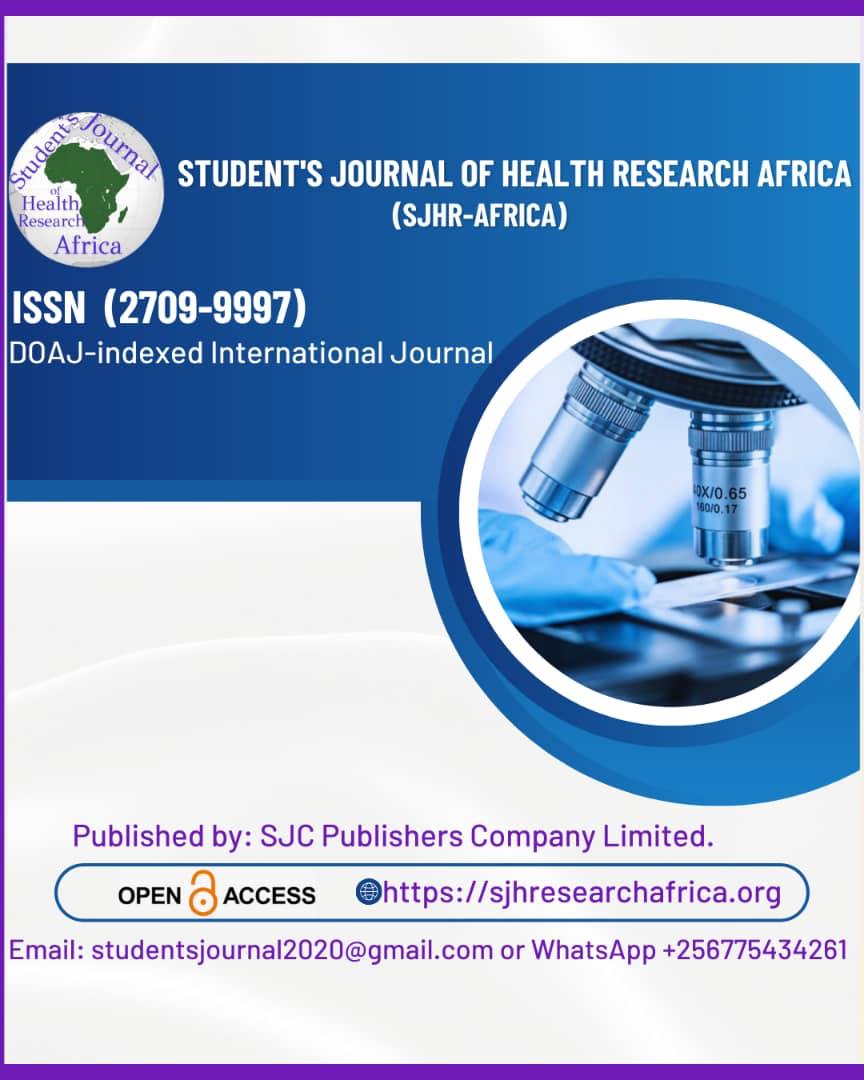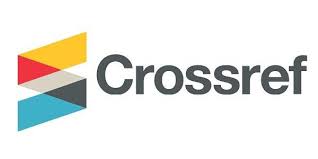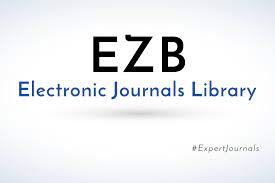A Cross-sectional study of glycosylated hemoglobin in different trimesters of normal pregnancy.
DOI:
https://doi.org/10.51168/sjhrafrica.v6i6.1888Keywords:
Glycated hemoglobin, HbA1c, Pregnancy, Trimesters, Gestational diabetes mellitus, Glycemic control, Hemodilution, Insulin resistanceAbstract
Background
Glycated hemoglobin (HbA1c) is widely accepted as a reliable indicator of long-term glycemic control. Unlike oral glucose tolerance tests (OGTT), which are the standard diagnostic tool for gestational diabetes mellitus (GDM) but often poorly tolerated during pregnancy, “HbA1c testing offers a non-fasting, convenient, and stable measure of blood glucose control over the previous 2–3 months. This study aims to assess the physiological variations in HbA1c levels across different trimesters of normal pregnancy in comparison with non-pregnant women of the same age group.
Methods
The study was conducted at the Department of Physiology, RIMS, Ranchi, from January 2016 to February 2017. A total of 60 female subjects, aged between 18 and 30 years, were included: 15 non-pregnant women (controls) and 45 pregnant women, distributed equally across the three trimesters. HbA1c levels were measured using the High-Performance Liquid Chromatography (HPLC) method. Statistical analysis was performed using MedCalc software to determine the significance levels between groups.
Results
The mean HbA1c level in non-pregnant women was 5.55% ± 0.30, which was higher than in all trimesters of pregnancy. In the first, second, and third trimesters, the mean HbA1c levels were 5.12% ± 0.32, 5.33% ± 0.32, and 5.03% ± 0.28, respectively. A significant reduction in HbA1c was observed in the first and third trimesters compared to the non-pregnant group (p = 0.0007 and p < 0.0001, respectively). The increase in the second trimester was not statistically significant when compared to the first.
Conclusion
HbA1c levels fluctuate during pregnancy due to physiological changes and should be interpreted with trimester-specific references. These findings support the potential utility of HbA1c as a complementary tool for glycemic assessment during pregnancy.
Recommendation
Clinicians consider using trimester-specific HbA1c reference ranges in routine prenatal care to improve monitoring of maternal glycemic status, especially when OGTT is not feasible.
References
Hu, M., Liang, S., Wu, Q., Lee, C. S., Lu, J., Bao, S., ... & Liang, Z. (2024). Association between changes in glycosylated hemoglobin during the second and third trimesters and adverse pregnancy outcomes among women without hyperglycemia in pregnancy. Diabetes Research and Clinical Practice, 216, 111841. https://doi.org/10.1016/j.diabres.2024.111841 PMid:39209162
Sun, J., Chai, S., Zhao, X., Yuan, N., Du, J., Liu, Y., ... & Zhang, X. (2021). Predictive value of first‐trimester glycosylated hemoglobin levels in gestational diabetes mellitus: a Chinese population cohort study. Journal of Diabetes Research, 2021(1), 5537110. https://doi.org/10.1155/2021/5537110 PMid:33928166 PMCid:PMC8053049
Kansu-Celik, H., Ozgu-Erdinc, A. S., Kisa, B., Eldem, S., Hancerliogullari, N., & Engin-Ustun, Y. (2021). Maternal serum glycosylated hemoglobin and fasting plasma glucose predict gestational diabetes at the first trimester in Turkish women with a low-risk pregnancy and its relationship with fetal birth weight; a retrospective cohort study. The Journal of Maternal-Fetal & Neonatal Medicine, 34(12), 1970-1977. https://doi.org/10.1080/14767058.2019.1651837 PMid:31370710
Zhang, Y., Li, T., Yue, C. Y., & Liu, Y. (2024). Associations of serum D-dimer and glycosylated hemoglobin levels with third-trimester fetal growth restriction in gestational diabetes mellitus. World Journal of Diabetes, 15(5), 914. https://doi.org/10.4239/wjd.v15.i5.914 PMid:38766442 PMCid:PMC11099364
Nazneen, A., & Usmani, F. (2023). Glycosylated Hemoglobin and Lipid Profile Changes in Gestational Diabetes: A Comparative Study with Normoglycemic Pregnant Women. European Journal of Cardiovascular Medicine, 13(3).
Sinha, M., & Gaurav, A. (2024). Glycosylated Hemoglobin and Lipid Profile Variations in Gestational Diabetes Compared to Normoglycemic Pregnancies. Azerbaijan Pharmaceutical and Pharmacotherapy Journal, 23, 1-5.
Kumar, A., & Sagar, M. (2024). Comparative Analysis of Glycosylated Hemoglobin and Lipid Profiles in Gestational Diabetes versus Normoglycemic Pregnancy. European Journal of Cardiovascular Medicine, 14(1).
Li, Y., Wang, F., Huang, X., Zong, S., Shen, Y., Guo, L., ... & Liu, J. (2024). First-trimester hemoglobin, haptoglobin genotype, and risk of gestational diabetes mellitus in a retrospective study among Chinese pregnant women. Nutrition & Diabetes, 14(1), 48. https://doi.org/10.1038/s41387-024-00309-y PMid:38951151 PMCid:PMC11217379
Amylidi‐Mohr, S., Lang, C., Mosimann, B., Fiedler, G. M., Stettler, C., Surbek, D., & Raio, L. (2023). First‐trimester glycosylated hemoglobin (HbA1c) and maternal characteristics in the prediction of gestational diabetes: An observational cohort study. Acta obstetricia et gynaecologica Scandinavica, 102(3), 294-300. https://doi.org/10.1111/aogs.14495 PMid:36524557 PMCid:PMC9951355
Kim, M. J., Park, S., Choi, S., Hong, S., Sung, J. H., Seol, H. J., ... & Ko, H. S. (2024). Maternal and Neonatal Outcomes Based on Changes in Glycosylated Hemoglobin Levels During First and Second Trimesters of Pregnancy in Women with Pregestational Diabetes: Multicenter, Retrospective Cohort Study in South Korea. Life, 14(12), 1575. https://doi.org/10.3390/life14121575 PMid:39768283 PMCid:PMC11676594
Doğan, Y., & Daryal, A. S. (2024). The impact of glycosylated hemoglobin and 75-g oral glucose tolerance test glucose levels on birthweight percentile. Revista da Associação Médica Brasileira, 70(9), e20240466. https://doi.org/10.1590/1806-9282.20240466 PMid:39292087 PMCid:PMC11415063
Khan, A., Asif, N., Ullah, R., Khan, T. A., Khan, A., & Malik, S. S. (2023). Establishing Reference Intervals for HBA1C in all three Trimesters of Pregnancy; A Cross-Sectional Study on Healthy Pregnant Women of Quetta, Baluchistan. Pakistan Armed Forces Medical Journal, 73(1), 84. https://doi.org/10.51253/pafmj.v73i1.4814
Rajanna, R., Muralidhar, L., & AswathReddy, S. (2025). To Evaluate the Role of First-trimester Glycosylated Hemoglobin as an Early Biomarker for Gestational Diabetes Mellitus. International Journal of Infertility & Fetal Medicine, 15(3), 153-156. https://doi.org/10.5005/jp-journals-10016-1361
Liabsuetrakul, T., Sriwimol, W., Jandee, K., Suksai, M., & Dyereg, J. (2022). Relationship of anthropometric measurements with glycated hemoglobin and 1‐h blood glucose after 50 g glucose challenge test in pregnant women: A longitudinal cohort study in Southern Thailand. Journal of Obstetrics and Gynaecology Research, 48(6), 1337-1347. https://doi.org/10.1111/jog.15213 PMid:35261106
Ji, J., Wu, P., Li, G., He, Z., Wang, S., Yu, W., ... & Luo, X. (2023). The associations of ferritin, serum lipid, and plasma glucose levels across pregnancy in women with gestational diabetes mellitus and newborn birth weight. BMC Pregnancy and Childbirth, 23(1), 478. https://doi.org/10.1186/s12884-023-05806-z PMid:37386448 PMCid:PMC10308749
Downloads
Published
How to Cite
Issue
Section
License
Copyright (c) 2025 Dr. Archana, Dr. Anil Kumar Kamal, Dr. Ranjit Kumar Arora, Dr. Priyanka Shrivastava, Dr . Deepak Kumar, Dr. Ranjit Kumar Rajak, Dr . Madhu Kumari

This work is licensed under a Creative Commons Attribution-NonCommercial-NoDerivatives 4.0 International License.






















